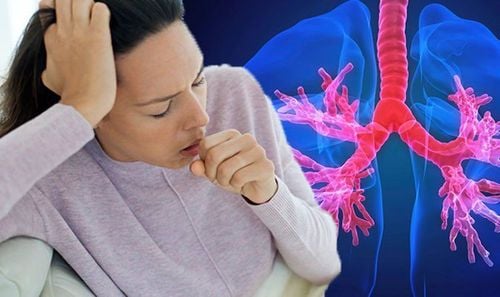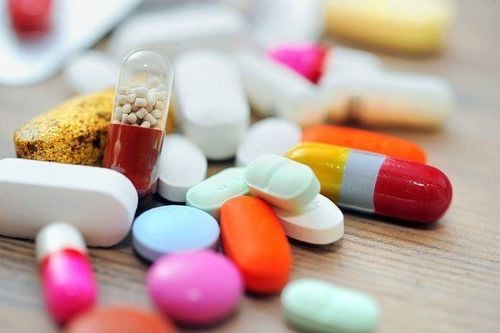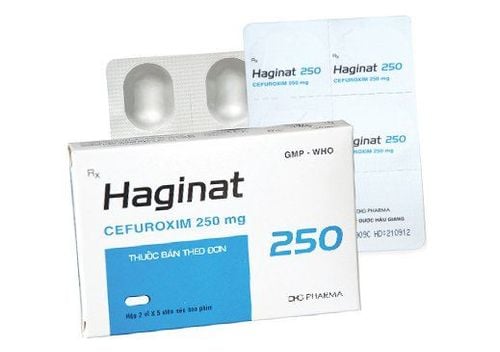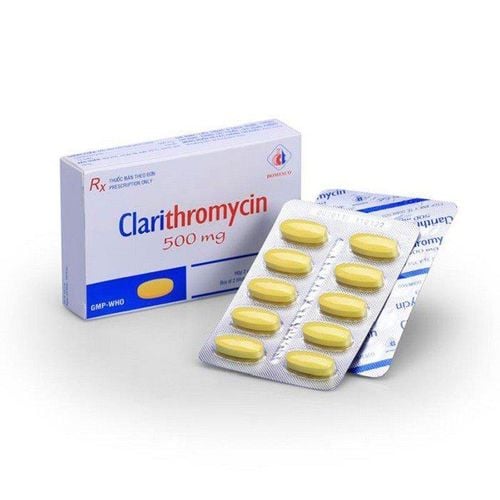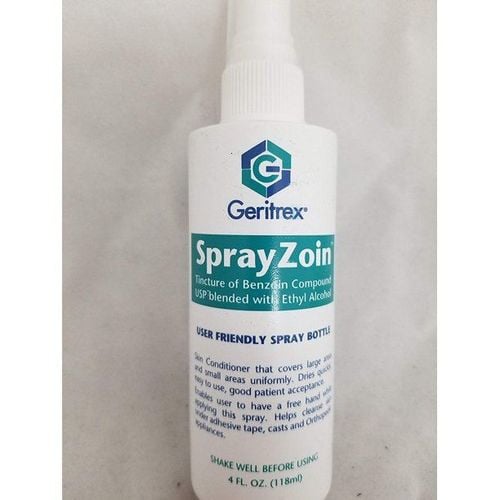This is an automatically translated article.
Guaifenesin medicine contains the main ingredient Guaiphenesin, other active ingredients and excipients in sufficient quantity. The drug works as an expectorant, promotes the removal of mucus from the airways, and lubricates irritated airways.
1. What is Guaifenesin?
Guaifenesin is available in many different forms. Drug form and drug content of Guaifenesin can be encountered such as:
200mg capsule; 300 mg extended-release capsules. 100mg or 200mg tablets; 1200 mg extended-release tablets. Oral solution type 100 mg/5 ml, type 200 mg/5 ml. Drug preparations in combination with Diaphyllin, Theophylline, Pseudoephedrine, Codeine, Dextromethorphan. Pharmacodynamics of Guaifenesin:
Guaifenesin has an expectorant effect, which is caused by irritation of the gastric mucosa, then stimulates increased secretion of secretions in the respiratory tract, increasing the volume and reducing the viscosity of secretions in the respiratory tract. bronchi - trachea. Therefore, the drug Guaifenesin has the effect of increasing the effectiveness of the cough reflex and making it easier to expel sputum. The drug is indicated for the treatment of cough with thick, thick sputum that is difficult to expel due to mild upper respiratory tract infections, colds. Guaifenesin is often combined with bronchodilators, nasal decongestants, antihistamines, or the cough suppressant Opiate. Pharmacokinetics of Guaifenesin:
Absorption: After oral administration, Guaifenesin is well absorbed from the gastrointestinal tract. In the blood, 60% of the drug is hydrolyzed in about 7 hours. Distribution: The geometric mean apparent volume of distribution of Guaifenesin determined in healthy adult subjects is 116L Metabolism: Following oral administration of 400 mg Guaifenesin, the agent is rapidly hydrolysed. rapidly (more than 60% of the administered dose is hydrolyzed within 7 hours) to β-(2-methoxyphenoxy)-lactic acid. This is the major metabolite in the urine, the parent drug is no longer detected in the urine. Elimination: Guaifenesin is excreted mainly in the urine. The inactive metabolite is eliminated via the kidneys. After oral administration of 400 mg of Guaifenesin, no intact drug was detected in the urine. The observed mean clearance for Guaifenesin is approximately 94.8 L/hr. The half-life of Guaifenesin is approximately 1 hour.
2. Indications of the drug Guaifenesin
Guaifenesin is indicated in the treatment of the following conditions:
Temporary relief of runny nose, nasal mucus, nasal congestion due to colds, bronchitis or laryngitis. Guaifenesin is combined with cough suppressants, antihistamines... used in cases of flu with a lot of phlegm, upper and lower respiratory tract infections.
3. Administration and dosage of Guaifenesin
Guaifenesin use in adults:
Guaifenesin long-acting tablets: Swallow whole, do not break, chew or crush. Take Guaifenesin with a full glass of cold or filtered water. Adults and children 12 years of age and older: 200-400 mg orally after 4 hours to take once again. If using long-acting preparations: use 600 mg or 1.2 g every 12 hours. Maximum therapeutic dose: 2.4 g per day. Use of Guaifenesin in Children:
Children from 6 years to under 12 years: 100 - 200 mg every 4 hours. If using long-acting preparations: 600 mg every 12 hours. Maximum therapeutic dose: 1.2 g per day. Children 4 to under 6 years: 50 - 100 mg every 4 hours. If using long-acting preparations: 300 mg every 12 hours. Maximum therapeutic dose: 600 mg per day. Use of Guaifenesin in other subjects:
Elderly: Use the same dosage as in adults. Hepatic or renal impairment: Use with caution in people with severe hepatic and renal impairment.
4. Case of overdose and treatment
Overdose and toxicity:
Acute symptoms: If taking Guaifenesin in higher doses than usual therapeutic doses may cause nausea, vomiting, gastrointestinal upset, drowsiness. When taken in excess, Guaifenesin can cause kidney stones. How to handle overdose: You need to immediately go to the nearest medical facility for timely treatment. The doctor will prescribe gastric lavage if detected early and treated symptomatically. In chronic cases, the abuse of products containing Guaifenesin can cause kidney stones. Missed dose and treatment:
If you miss a dose of Guaifenesin, take it as soon as you remember. However, if the time gap is close to the time for your next dose, skip the missed dose and continue with your usual dosing schedule. You should never take a double dose to make up for the missed dose.
5. Undesirable effects of the drug Guaifenesin
Rare or uncommon reactions such as dizziness, headache, diarrhea, vomiting or nausea, abdominal pain, skin rash, urticaria. Kidney stones have been reported in people who abuse products containing the active ingredient Guaifenesin.
Adverse effects are usually relatively mild and go away on their own. If after taking the drug you experience vomiting or abdominal pain, stop using the drug completely. Avoid long-term use of the drug. You need to be careful when using the drug to treat children under 12 years of age. Guaifenesin should be taken with plenty of water to have the effect of thinning the thick phlegm.
6. Guaifenesin drug interactions
Do not use the combination of Guaifenesin and dextromethorphan for people who are taking MAO inhibitors.
Caution should be exercised when a combination of Guaifenesin and Phenylpropanolamine is used in patients with hypertension, cardiovascular disease, diabetes, peripheral vascular disease or prostate enlargement and glaucoma.
Use of Guaifenesin may give false positive results in the urine vanillylmandelic acid test. You need to pay attention to stop taking Guaifenesin 48 hours before taking a urine sample for this test.
7. Some notes when treating diseases with Guaifenesin
General note when taking Guaifenesin:
Do not use Guaifenesin in cases of persistent or chronic cough such as frequent smokers, asthma, chronic bronchitis, emphysema or increased cough. produce a lot of phlegm. People need to be adequately rehydrated while taking Guaifenesin. Do not use Guaifenesin for more than 7 days without consulting your doctor. Guaifenesin is considered unsafe for use in humans with porphyria caused by the drug causing porphyria in laboratory animals. Use in Children: Guaifenesin has been used in children. However, there have been numerous reports of guaifenesin poisoning and potentially fatal overdoses from over-the-counter cough and cold preparations containing expectorants (including expectorants). Guaifenesin) for young children. Therefore, it is not recommended to arbitrarily use Guaifenesin for children under 4 years of age unless directed by a doctor. Some combinations are not reasonable, such as Guaifenesin with cough medicine, because the cough reflex helps expel sputum, especially in the elderly. Note for pregnant women:
There are no well-controlled studies in pregnant women. Because the risk to the fetus cannot be completely ruled out, guaifenesin should be used with caution and should only be used in pregnant women when the potential benefit to the mother outweighs the risk to the fetus. Caution for nursing women
There are no data on the use of Guaifenesin in lactating women. Care should be taken when using the drug for this group of people. Attention to Drivers and Operate Machines
Guaifenesin has no or negligible influence on the ability to drive and use machines. In a nutshell, Guaifenesin is an expectorant, promotes mucus removal, and lubricates irritated airways. You need to use the medicine exactly as prescribed by the doctor to promote the effectiveness of treatment and ensure safety for health.
Please dial HOTLINE for more information or register for an appointment HERE. Download MyVinmec app to make appointments faster and to manage your bookings easily.




